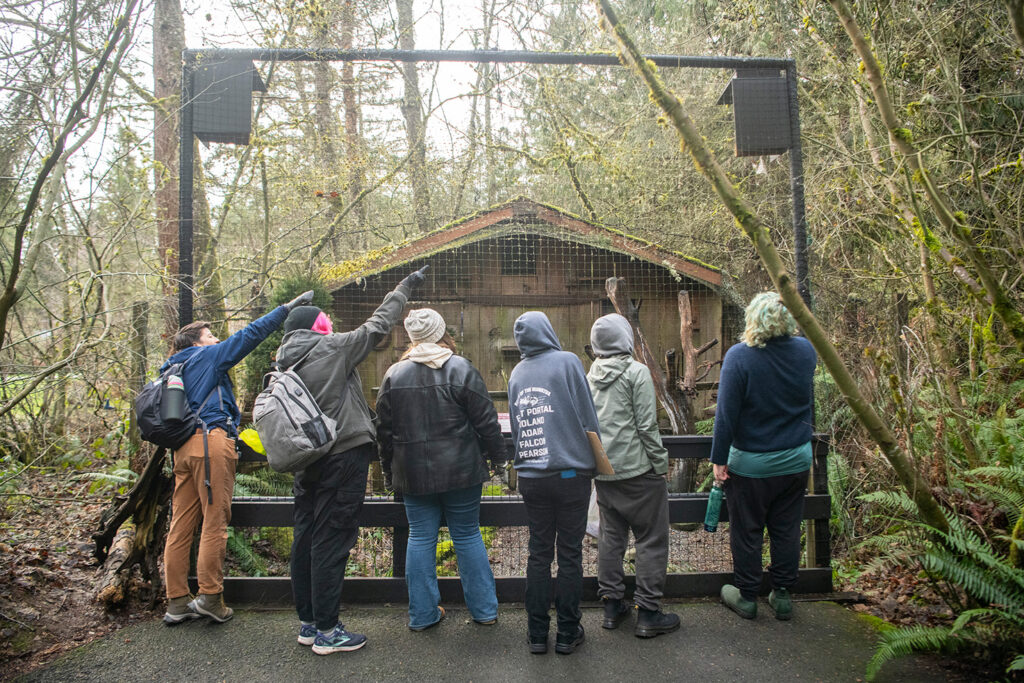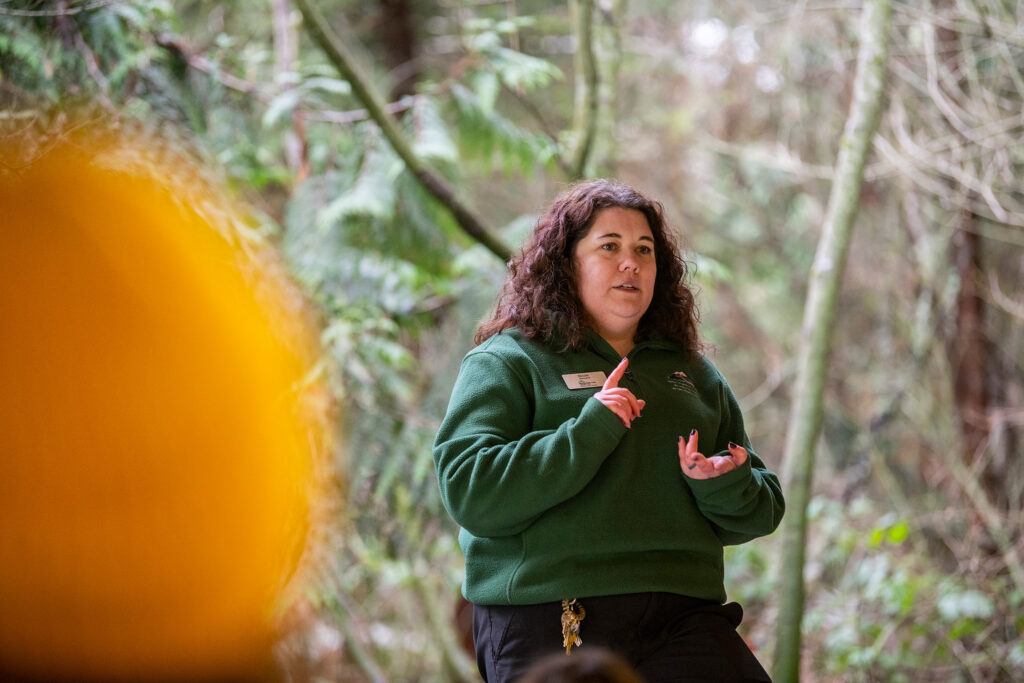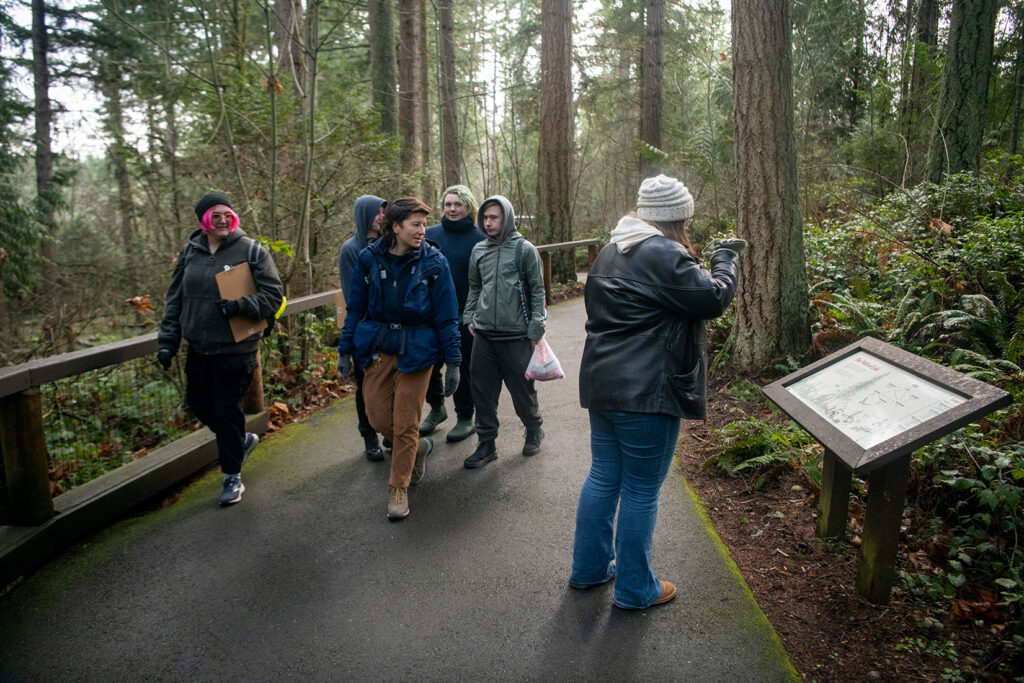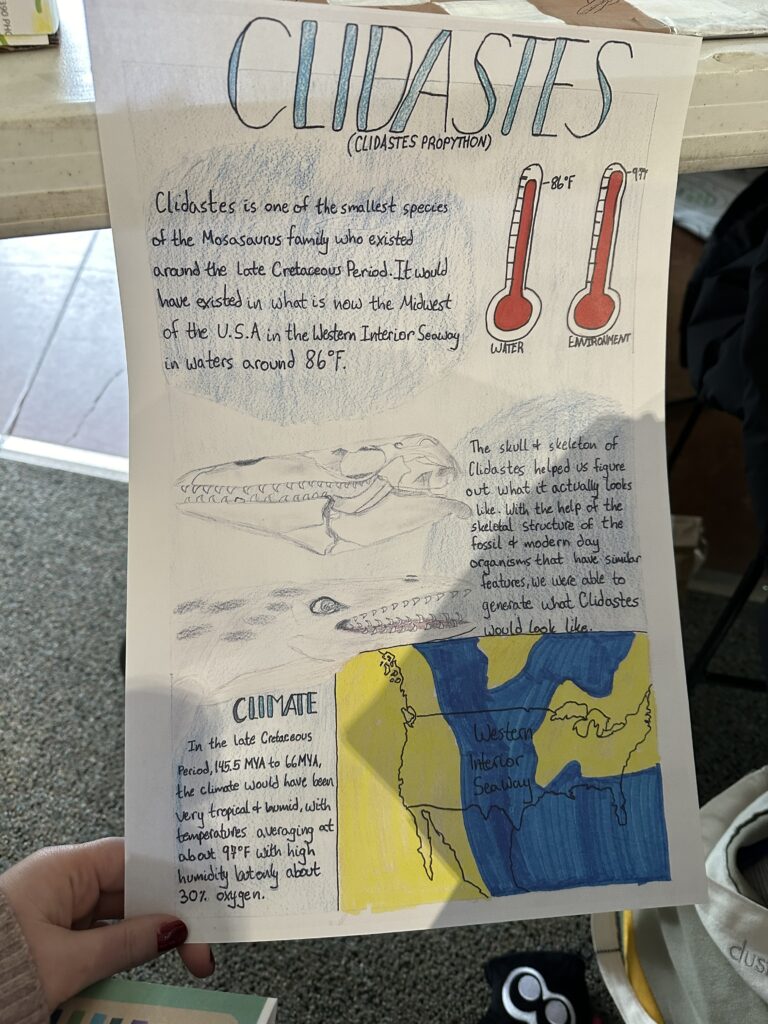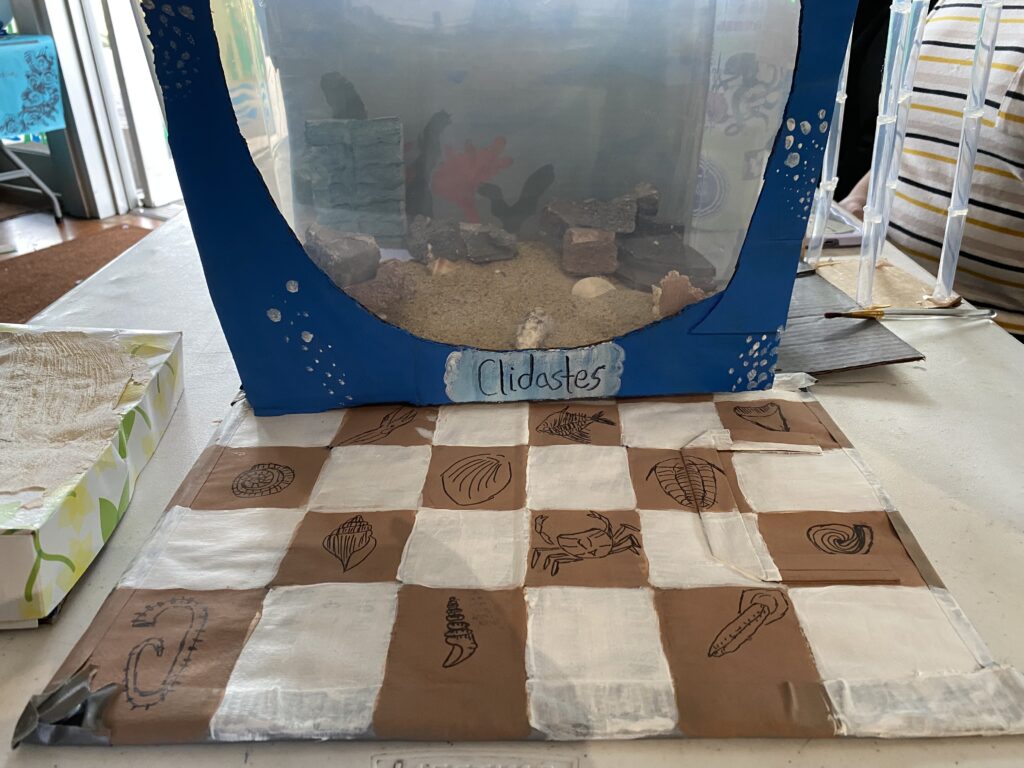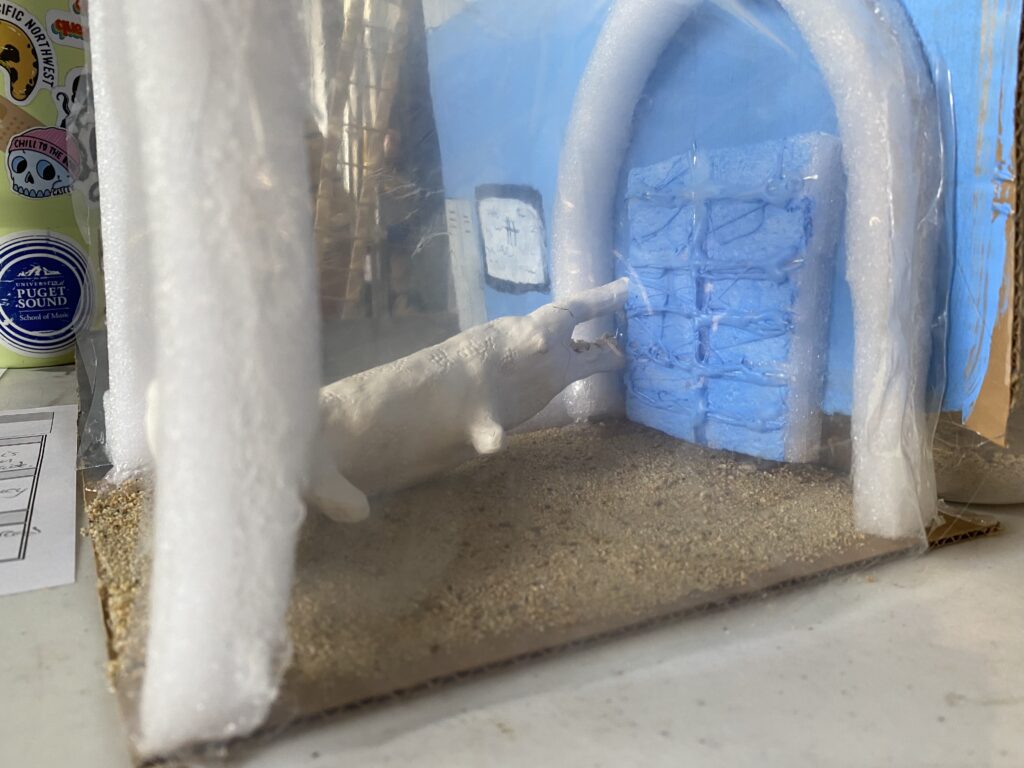During Tacoma Public Schools January mini-term, students at the Science and Math Institute (SAMi), School of the Arts (SOTA), and Industrial Design Engineering and Art (IDEA) choose one class from a variety of exciting, hands-on courses to deep-dive into all month long. You’ll see students enthusiastic and eager to learn on any given day.
Students in the “Jurassic Zoo and Aquarium” class studied the habitats at Point Defiance Zoo & Aquarium and Northwest Trek Wildlife Park to re-create the famous Jurassic Park using current zoo and aquarium design criteria.
“We encouraged the students to create their own more ethical, sustainable, and safe Jurassic Zoo and Aquarium,” said SAMi teacher Matt Lonsdale. “Fortunately for SAMi, we are partners with two incredible Metro Parks Tacoma zoos and share a campus with one of them.”
SAMi’s Environmental Learning Center, a 30,000-square-foot building full of classrooms and modern laboratories, is inside the Point Defiance Zoo grounds.
“It’s a great opportunity for the students to be inspired by and learn from zoo employees just outside their classrooms,” said Molly Edison, the zoo’s SAMi partnership coordinator.
While students often collaborate with Point Defiance Zoo, they rarely have the opportunity to visit sister zoo Northwest Trek in Eatonville, about an hour away. In early January, students piled onto a bus and headed that way – ready to be inspired to create their own “Jurassic Zoo.”
Field Trip to Northwest Trek
“Welcome to Northwest Trek!” exclaimed Nicole Hennigan, one of Northwest Trek’s nature engagement naturalists.
The students gathered around as Hennigan explained the similarities and differences between the animals and habitats of Northwest Trek and Point Defiance Zoo.
“What do you notice when you look around?” Hennigan asked the class.
“The habitats aren’t just about the animals, but they also showcase the beautiful nature of the Pacific Northwest,” said junior Ayla Macary.
The zoo is divided into areas based on habitats around the world: the Asian Forest Sanctuary, Arctic Tundra, Baja Bay, and more. On the other hand, Northwest Trek is home to animals native to the Pacific Northwest, like beavers, moose, and bison. The entire wildlife park is designed around the woodsy forest feeling you imagine when you think of Washington, Alaska, Idaho, and Oregon.
As students began to explore Northwest Trek, they did so with intention.
“I’m trying to go slow so I can take it all in,” said Macary.
Macary already knew the prehistoric animal she planned to study: the clidastes, an extinct genus of marine lizard belonging to the mosasaur family. As she examined each habitat with deep admiration and awe, she also imagined the Late Cretaceous Age, 145 to 66 million years ago.
“I love all the signs around Northwest Trek that tell people about the nature they are seeing,” said Macary. “I want to include interactive elements like that when I create my habitat for the clidastes.”
She also noted the enrichment items and food the animals were given, asking Hennigan thoughtful questions about all aspects of animal care.
Prehistoric Park
Back at SAMi in late January, Macary and her classmates transformed a classroom into the attraction “Prehistoric Park.” They handed a Prehistoric Park map to other students and zoo staff as they arrived to see their end-of-term presentations.
The map read:
“Prehistoric Park was founded on January 2, 2024 with the aim to educate society on the newly brought back dinosaurs, but in a more effective and humane way than its predecessor, Jurassic Park. Our student scientists learned and took inspiration from zoos across Washington State and created enclosures for their specific prehistoric creatures as well as learning all about them.”
Prehistoric Park included a Sauropod Free-Roaming Area (a nod to Northwest Trek’s 435-acre Free-Roaming Area), the Cretaceous Period, Aquatic Area, Jurassic Period, and Paleozoic and Triassic Period.
Each student sat behind a 3D model of their habitat, explaining to Prehistoric Park guests the decisions that went into creating the perfect environment for their creature.
For Macary, her 3D model included a marine environment with a sandy and rocky bottom and replica clidastes made of clay. Safety protocols were listed behind the scenes for keepers: double-walled glass, ladders for keepers to use as an entrance and exit, and steel-reinforced doors. There was a red button to push for an emergency lockdown, but Macary said that shouldn’t be a worry; this clidastes has a calm temperament.
She incorporated signs and interactive elements inspired by her visit to Northwest Trek. A feeding schedule was hung: 5 a.m., 12 p.m., and 5 p.m. She planned to feed the creature crushed shellfish and crustacean ice blocks. Guests were invited to touch a clay replica of a clidastes skin.
“It’s a rough texture,” explained Macary.
Even with the class now over, Macary says she plans to incorporate what she’s learned into her future.
“I want to become a marine biologist and study migratory patterns and rehabilitation,” she said. “I would also love to work with sharks.”
“It’s been a joy to watch these students grow and learn during this class,” said Edison. “And it is exciting to watch them energized and motivated to get involved with local wildlife. That’s what it’s all about!”
